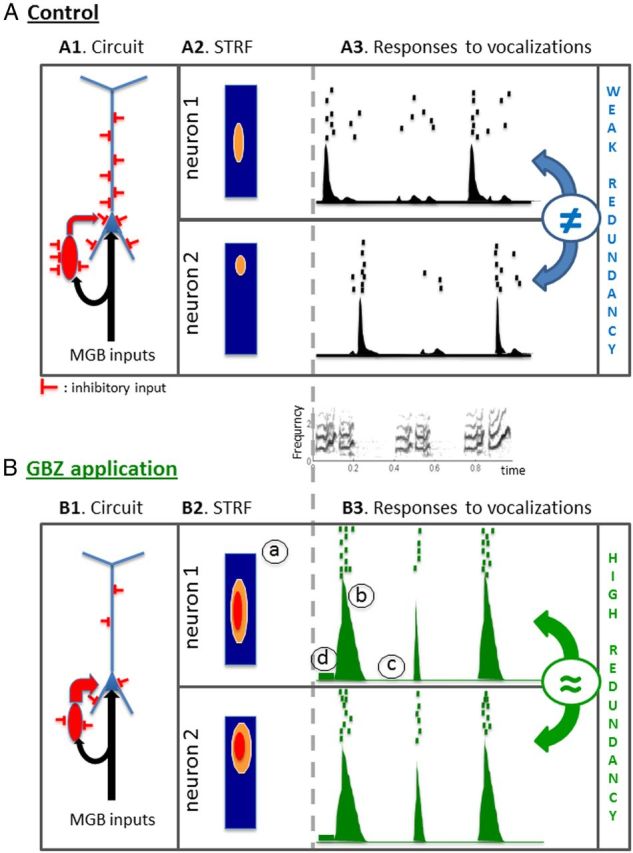Figure 12.

Putative model of GBZ effects on cortical processing. A, In the control condition, auditory inputs from the medial geniculate body (MGB; black arrows in A1) reach cortical pyramidal neurons (blue cell) and inhibitory interneurons (red cell), thus providing a phasic excitatory input followed by a phasic inhibition (feedforward inhibition). Both pyramidal cells and inhibitory interneurons also receive tonic inhibitory inputs from local inhibitory networks. The interplay between phasic excitation, phasic inhibition, and tonic inhibition determines the firing patterns of the pyramidal cell, which likely correspond to the recorded neuronal response in our experiments. For a typical recording with a significant STRF (A2), phasic responses were regularly observed at several time points during the vocalizations (see raster and PSTH in A3). B, Topical application of GBZ leads to a partial release of inhibitory inputs reaching both the pyramidal cell and the interneuron (schematized here by a reduction of the number of inhibitory inputs; B1). This reduced inhibition promotes a higher excitability and increased the neuronal response to medial geniculate body (MGB) inputs. As a consequence, the response strength in the STRF (B1, a) and in the phasic peaks of responses of the PSTH (B3, b) are increased. This increased excitability also reaches the inhibitory interneuron, leading to a stronger feedforward inhibition, which promotes silent periods between the peaks of discharges (B3, c) despite an increase in spontaneous firing rate (B3, d). Ultimately, these events lead to improve the intertrial reliability of temporal patterns. All MI considered here were based on temporal patterns.
